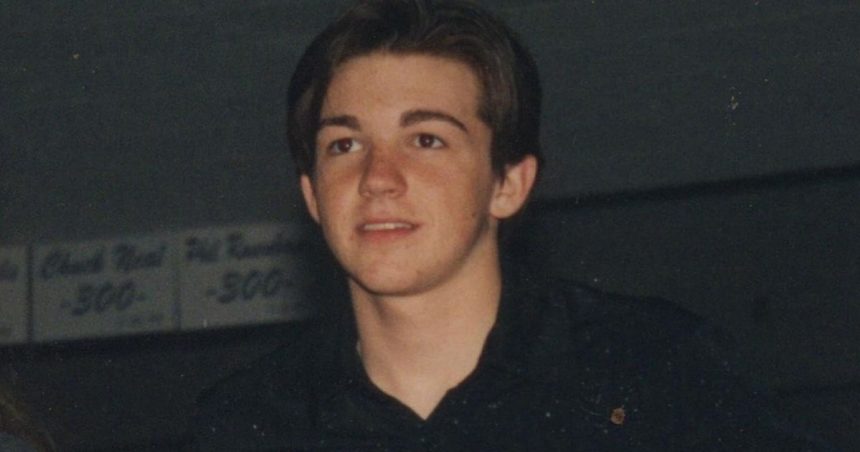The docuseries’ tendency toward sensationalism fails to dig into the system’s biggest failures.
Photo: Investigation Discovert
It’s been three weeks since Investigation Discovery aired the four-part docuseries Quiet on Set: The Dark Side of Kids TV, which spotlighted the ways child actors were physically and mentally abused during their time at Nickelodeon. In the vein of Surviving R. Kelly, Allen v. Farrow, and Leaving Neverland, which also explored how powerful, famous men got away with horrific child abuse, Quiet on Set mainly focuses on superproducer Dan Schneider and acting coach Brian Peck. The doc has attracted a loud and largely supportive response from former Nickelodeon stars, while its simultaneous release on Max and Discovery+ allowed the show to become the most-viewed unscripted Max series since its launch last year. An extra fifth episode is set to air this Sunday night, digging deeper into the revelations and featuring a conversation with Soledad O’Brien about how the industry can better protect child actors. Yet there’s a missed opportunity for nuance in the series itself, a reliance on theatrics in lieu of depth. After a while, its analysis starts to sound like the audio equivalent to b-roll — a slurry of interchangeable phrases like “ethically fraught,” “concerning and problematic,” and “toxic environment,” offering only surface-level analysis of the actual power dynamics and systemic roadblocks under discussion.
Quiet on Set is at its best when it presents direct, intimate accounts from the people who experienced the subject most directly — in this case, the child stars who worked on Schneider’s productions, along with the parents who found themselves increasingly helpless to protect their kids from the corrosive effects of child stardom. Schneider, the producer who ruled Nickelodeon from the late ’90s through much of the 2010s and created teen sitcom classics like Drake & Josh, Zoey 101, iCarly, and Victorious, has a history of alleged sexual misconduct and gender discrimination stretching back to The Amanda Show, the sketch show he created that launched Amanda Bynes into the stratosphere. Schneider’s “golden boy” status at Nickelodeon kept him largely insulated from lasting consequences, as we learn in talking heads from actors, writers, a director, a cameraman, an editor, and a costumer who worked for him. In the second episode, All That’s Bryan Christopher Hearne, one of the show’s few Black cast members, describes his discomfort with certain skits, especially the Fear Factor-esque On Air Dares — such as covering him in peanut butter and bringing in dogs to lick it off — that went way too far. But the most heartbreaking part of Hearne’s story is hearing from his mother Tracey about how their relationship deteriorated after her complaints got him cut before the third season. “It ruined us,” she says, overcome with emotion.
These testimonies are distressing, but they often dwell on the same subjects for an inordinate period of time that could be better spent. Moving from Christy Stratton and Jenny Kilgen’s experiences of sexism as underpaid women in Schneider’s male-dominated writers room to Drake Bell’s experience of “the worst stuff that someone could do to somebody as a sexual assault” at the hands of Peck does a disservice to both, especially because they involve different men. The contrast unintentionally risks softening the impact of Schneider’s own offenses — even more so when episode four clumsily brings the focus back to his coercive massage requests and other comparatively minor infractions. That same episode also references iCarly and Sam & Cat star Jennette McCurdy’s memoir I’m Glad My Mom Died but only touches on her coded descriptions of Schneider (“the Creator”) and refrains entirely from mentioning the anecdote about Schneider encouraging teenagers on his projects to drink alcohol. Of course, all of this stuff is interrelated, all part of the same system that fails women in Hollywood just like it fails children. Experiencing the utter horror and tragedy of Bell’s story doesn’t necessarily make it less impactful to witness Alexa Nikolas’s troubled reaction to recalling Jamie Lynn Spears getting hit in the face with a squirt of “Goo Pop” for Zoey 101, explicitly intended as a cum-shot joke according to her testimony.
But directors Mary Robertson and Emma Schwartz spend too much time mining for subtext. They pepper every episode with repetitive images of once-seemingly-harmless kids’ jokes from Schneider’s shows, transformed by context and retrospection into deeply inappropriate sexual innuendos. The series inadvertently turns into one of those darkly entertaining “Dan Schneider creepy moments” compilations on YouTube, reveling in the grotesquerie of it all, relishing each sickening juxtaposition. (It’s no surprise the directors were first led to this investigation after noticing that very genre of video.) There’s a sensationalism in the presentation, like the principal goal here is ruining viewers’ childhoods rather than actually digging into the system’s biggest failures. The Hollywood machine itself goes woefully underrecognized, supplanted by Dan Schneider the auteur, the golden boy, the cash cow, the king maker. It’s not that Schneider’s alleged behavior isn’t gross and harmful. But the doc makes him come across as a convenient scapegoat, an easy target on which to blame a whole industry’s worth of abuse. Nickelodeon employees like director Virgil L. Fabian are interviewed about Schneider’s behavior, but none are asked about the nitty-gritty of how it was allowed to happen, much less directly challenged about their own possible complicity. (Fabian, for the record, always went to bat for the kids, according to All That’s Giovonnie Samuels.)
Some of these people followed Schneider to three or more shows, like editor Karyn Finley Thompson (All That, The Amanda Show, Drake & Josh) and one anonymous costumer (Zoey 101, iCarly, Victorious, Sam & Cat, Henry Danger). The latter makes clear that she didn’t feel safe reporting Schneider’s behavior to her union until 2017, but there’s still little engagement with how those implicit threats manifest. Everything just gets lumped under the “Dan was powerful and indispensable” explanation without further probing. It’s hard to argue with Schneider’s final statement: “Everything that happened on the shows I ran was carefully scrutinized by dozens of involved adults. All stories, dialogue, costumes and makeup were fully approved by network executives on two coasts. A standards and practices group read and ultimately approved every script, and program executives approved all episodes.” You get the sense that the series could’ve used some of those “dozens” of perspectives.
There’s also nuance missing from the documentary’s centerpiece interview with Drake Bell, which takes place over the course of episode three and part of episode four. For the most part, the account of Bell’s routine sexual abuse is the emotional peak of this series; the facts of what happened are horrifying, and it’s devastating to see the way it hurts Bell’s father Joe. (“I’m not the same today. The pain’s still there from the moment that I knew.”) You can tell by the way Bell squirms how much those events live with him still. He’s verbalizing them publicly for the first time, and that’s both liberating and extremely uncomfortable.
Again, though, the documentary doesn’t go deep enough. It recounts how Peck’s side of the courtroom was full during his trial in October 2004, and that many celebrities wrote letters of support (recently unsealed after the directors petitioned the court). But aside from two interstitial cards with defensive comments from Growing Pains star Joanna Kerns as well as Nickelodeon directors Rich and Beth Correll — who later worked with Peck briefly on The Suite Life of Zack & Cody — there’s no testimony from anyone who demonstrably supported Peck at that time.
“We don’t know exactly what these people were told about Brian’s crimes before they wrote the letters,” says Business Insider journalist Kate Taylor, who partnered with Robertson and Schwartz on much of the impressive reporting. “And we don’t know which of these people, if any, were in the courtroom for Brian’s sentencing.” Fair enough; there’s still so much to uncover, and many old Nickelodeon stars and employees still don’t feel prepared to speak about it on the record. But even with unprecedented access, there still feels like a noticeable gap. It’s partly a matter of approach — a resistance to real texture and complication.
One such complication: Drake Bell himself is an alleged abuser, a fact that Quiet on Set really downplays. Sure, there’s a cursory mention: Scaachi Koul, culture writer for Buzzfeed and another frequent narrator of the docuseries, points out that Bell’s 2021 child endangerment conviction didn’t involve any physical harm to the victim, only inappropriate texting. But there’s much more to it than that, even if the conduct on trial dealt with texting specifically. During Bell’s sentencing, the same victim (19 at the time) read an impact statement alleging that he groomed her from the age of 12 and sexually assaulted her when she was 15 — the same age, as it happens, that Bell was when Peck took interest in him. “He is the epitome of evil,” she wrote. “Jared Drake Bell is a pedophile, and that is his legacy.” That’s not to mention 2020 allegations of verbal and physical abuse from Bell’s former girlfriend Melissa Lingafelt, who also accused him of a pattern of inappropriate behavior with underage girls — and posted a number of since-deleted TikToks that included other messages from women who allegedly witnessed or experienced similar situations.
There’s a belief from some that bringing up these allegations in direct response to Bell’s story is inappropriate or minimizing, but it really isn’t. These are experiences that deserve to be amplified instead of ignored or referred to euphemistically with language like “self-destructive behavior,” or waved away with vague references to media misinformation. In the time since Quiet on Set aired, Bell’s accusers have faced a torrent of online abuse, and that’s partially a result of a series that centered his perspective above all others.
In addition to the ethical and journalistic issues of ignoring those crucial points of view, Quiet on Set misses a major opportunity to explore the complex, often amorphous reasons why some abused people continue the cycle and become perpetrators themselves. Bell was abused as a child, and he later allegedly abused children. Those two facts aren’t unrelated, and it short-changes the goals of the series to hint at a connection without exploring it longer than a few minutes. Maybe those complexities could’ve been brought out with the inclusion of a child psychologist, as in Allen v. Farrow. But there are very few experts here from relevant industries — no specialist to discuss the effects of abuse, and no authority on child labor laws to provide context for the long, illegal hours these kids were asked to work. The closest we get is Anne Henry, who co-founded BizParentz Foundation for supporting child performers, but she only appears briefly, offering minimal insight. For the most part, this story is framed by Taylor and Koul’s serviceable narration, filling in expository and psychological blanks as they pop up. Both are clearly intelligent and well-researched, but this type of material calls for a more tailored approach.
“It’s clear that the system needs to look at if it is doing enough to protect children,” Taylor says in the final episode. It’s a hard point to argue against, especially after all the evidence presented that so many of these kids were irrevocably traumatized by experiences at Nickelodeon. Quiet on Set definitely accomplishes its goal in bringing their stories to a wider audience, and its effects will continue to reverberate. But as the credits roll, its absences linger — those shimmering silhouettes of the faceless suits who keep the system chugging along every day, loud and unstoppable over the sound of giggling kids backstage.












